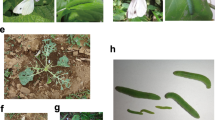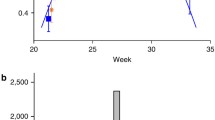Summary
Species of acridids throughout the world are shown to have very similar habitats and food plants, and to increase and decrease in abundance in response to very similar patterns of weather. Changes in the rate of survival of the very young hoppers from unexplained causes would appear to be the major factor influencing these changes in abundance; parasites and predators apparently have little if any significant effect.
It is postulated that variation in survival of the very young is brought about by changes in the abundance and nitrogen content of their food plants, and that this in turn is largely influenced by changes in patterns of rainfall.
The hypothesis—already proposed for other phytophagous insects—states that the environment of these insects is basically inadequate in that there is normally a relative shortage of nitrogenous food for the rapidly growing young. Species have adapted to this inadequate environment by producing large “surpluses” of young.
When chance combinations of weather stress the food plants, making them a richer source of nitrogen, there is a greatly increased rate of survival of the very young, rapidly leading to explosive increases in abundance—to outbreaks.
Some of the implications of applying this hypothesis more generally to the interpretation of the ecology of herbivores are discussed.
Similar content being viewed by others
References
Abd El Rahman, A. A.: Effect of moisture stress on plants. Phyton 15, 67–86 (1973)
Andrewartha, H. G.: The environment of the Australian Plague Locust (Chortoicetes terminefera Walk.) in South Australia. Trans. roy. Soc. S. A. 64, 76–94 (1940)
Barnes, O. L.: Effects of food plants on the Lesser Migratory Grasshopper. J. econ. Ent. 48, 119–124 (1955)
Barnett, N. M., Naylor, A. W.: Amino acid and protein metabolism in Bermuda grass during water stress. Pl. Physiol. (Lancaster) 41, 1222–1230 (1966)
Baskin, C. C., Baskin, J. M.: Responses of astragalus tennesseensis to drought. Changes in free amino acids and amides during water stress and possible ecological significance. Oecologia (Berl.) 17, 11–16 (1974)
Bird, R. D., Romanow, W.: The effect of agricultural development on the grasshopper populations of the Red River Valley of Manitoba, Canada. Canad. Ent. 98, 487–507 (1966)
Bird, R. D., Willard, A., Seyward Smith, D.: The responses of grasshoppers to ecological changes produced by agricultural development in southwestern Manitoba. Canad. Ent. 98, 1191–1205 (1966)
Casimir, M.: History of the outbreaks of Australian Plague Locust, Chortoicetes terminifera (Walk.), between 1933 and 1959, and an analysis of the influence of rainfall on these outbreaks. Aust. J. agric. Res. 13, 674–700 (1962)
Clark, D. P.: The influence of rainfall on the density of adult Chortoicetes terminifera (Walker) in central western New South Wales, 1965–1973. Aust. J. Zool. 22, 365–386 (1974)
Davey, J. T., Johnston, H. B.: The African Migratory Locust (Locusta migratoria migratoriodes R & F) in Nigeria. Anti-Locust Bull. 22, 1–91 (1956)
Dean, G. J. W.: Grasslands of the Rukwa Valley. J. appl. Ecol. 4, 45–57 (1967)
Dean, G. J. W.: Studies of factors affecting the formation of hopper bands of the Red Locust (Nomadacris septemfasciata) in an outbreak area. J. appl. Ecol. 5, 273–290 (1968)
Dempster, J. P.: The population dynamics of grasshoppers and locusts. Biol. Rev. 38, 490–529 (1963)
Descamps, M., Mezzadri, D.: Preliminary study of a focus of gregarization of the African Migratory Locust in the Sudan area (Sikasso region, Mali) [in French]. Locusta 10, 1–60 (1965)
Dove, L. D.: Nitrogen distribution in tomato plants during drought (Lycopersicum esculentum “Manglobe”). Phyton. Rev. Int. Bot. Exp. 25, 49–52 (1968)
Van den Driessche, R.: Prediction of mineral nutrient status of trees by foliar analysis. Bot. Rev. 40, 347–394 (1974)
Edwards, R. L.: Relationship between grasshopper abundance and weather conditions in Saskatchewan 1930–1958. Canad. Ent. 92, 619–623 (1960)
Elton, C.: Animal ecology. London: Sidgwick & Jackson 1927
Farrow, R. A.: Comparative plague dynamics of tropical Locusta (Orthoptera, Acrididae). Bull. ent. Res. 64, 401–411 (1974)
Feeney, P.: Seasonal changes in oak leaf tannins and nutrients as a cause of spring feeding by winter month caterpillars. Ecology 51, 565–581 (1970)
Gunn, D. L.: The biological background of locust control. Ann. Rev. Ent. 5, 279–300 (1960)
Gunn, D. L., Symmons, P. M.: Forcasting locust outbreaks. Nature (Lond.) 184, 1425–1426 (1959)
Hopkins, J. W.: Protein content of Western Canadian hard red spring wheat in relation to some environmental factors. Agric. Meteor. 5, 411–431 (1968)
Kemble, A. R., MacPherson, H. T.: Liberation of amino acids in perennial ryegrass during wilting. Biochem. J. 58, 46–50 (1954)
Key, K. H. L.: The general ecological characteristics of the outbreak areas and outbreak years of the Australian plague locust (Chortoicetes terminifera Walk.). C.S.I.R., Aust. Bull. No. 186 (1945)
Kuhne, K. W.: The “outbreak area” theory in relation to the Red Locust. F.A.O. Plt. Protect. Bull. 2, 8–13 (1973)
Lahiri, A. N., Singh, S.: Studies on plant-water relationships. V. Influence of soil moisture on plant performance and nitrogen status of the shoot tissue. Proc. Indian Nat. Sci. Acad. B. 36, 112–125 (1970)
Lea, A.: Recent outbreaks of the Brown Locust, Locustana pardalina (Walk.) with special reference to the influence of rainfall. J. ent. Soc. S. Afr. 21, 162–213 (1958)
Lea, A.: Natural regulation and artificical control of Brown Locust numbers. J. ent. Soc. S. Afr. 31, 97–112 (1968)
Lea, A.: The population ecology of brown locusts, Locustana pardalina (Walk.), on fixed observation areas. Phytophylactica 1, 93–102 (1969)
Lean, O. B.: Locusta migratoria migratorioides, R. & F.: An ecological reconnaissance of the suspected Middle Niger outbreak area. Bull. ent. Res. 27, 105–184 (1936)
MacCarthy, H. R.: A ten year study of the climatology of Melanoplus mexicanus mexicanus (Sauss.) (Orthoptera: Acrididae) in Saskatchewan. Canad. J. agr. Sci. 36, 445–462 (1956)
Natera, J.: Outbreak of L. migratoria L. in the Markham Valley. PANS 20, 327 (1974)
Parker, J. R.: Some effects of temperature and moisture upon Melanoplus mexicanus, Saussure, and Camnula pellucida, Scudder. Bull. Univ. Montana Agric. Expt. Sta. 223, 1–132 (1950)
Pedgley, D. E., Symmons, P. M.: Weather and the locust upsurge. Weather (Lond.) 23, 484–492 (1968)
Pickford, R.: Development, survival and reproduction of Melanoplus bilituratus (Wlk.) (Orthoptera: Acrididae) reared on various food plants. Canad. Ent. 94, 859–869 (1962)
Pickford, R.: Development survival and reproduction of Camnula pellucida (Scudder) (Orthoptera: Acrididae) in relation to climatic conditions. Canad. Ent. 98, 158–169 (1966)
Protsenko, D. F., Shmat'ko, I. G., Rubanyuk, E. A.: Drought hardiness of winter wheat varieties as related to their amino acid composition [in Russian]. Fiziol. Rast. 15, 680–687 (1968)
Riegert, P. W.: A history of grasshopper abundance surveys and forecasts of outbreaks in Saskatchewan. Mem. ent. Soc. Can. 52, 1–99 (1968)
Roffey, J.: The build up of the present desert locust plague. PANS 15, 12–17 (1969)
Roffey, J.: Locusta outbreaks in the Philippines. Acrida 1, 177–188 (1972)
Roffey, J., Popov, G. B.: Environmental and behavioural processes in a desert locust outbreak. Nature (Lond.) 219, 446–450 (1968)
Roffey, J., Popov, G., Hemming, C. F.: Outbreaks and recession populations of the desert locust Schistocerca gregaria (Forsk.). Bull. ent. Res. 59, 675–680 (1968)
Scharff, D. K.: The role of food plants and weather in the ecology of Melanoplus mexicanus mexicanus (Sauss.). J. econ. Ent. 47, 485–489 (1954)
Singh, T. N., Paleg, L. G., Aspinall, D.: Stress metabolism. I. Nitrogen metabolism and growth in the barley plant during water stress. Aust. J. Biol. Sci. 26, 45–56 (1973)
Smith, D. S., Handford, R. H., Chefurka, W.: Some effects of various food plants on Melanoplus mexicanus mexicanus (Sauss.) (Orthoptera: Acrididae). Canad. Ent. 84, 113–117 (1952)
Smith, D. S., Northcott, F. E.: The effect on the grasshopper, Melanoplus mexicanus mexicanus (Sauss.) of varying the nitrogen content in its food plant. Canad. J. Zool. 29, 297–304 (1951)
Smith, L. B.: Possible effects of changes in the environment on grasshopper populations. Man. Entomol. 3, 51–55 (1969)
Smith, R. C.: An analysis of 100 years of grasshopper populations in Kansas (1854 to 1954). Trans. Kansas Acad. Sci. 57, 397–433 (1954)
Stortenbeker, C. W.: Observations on the population dynamics of the red locust, Nomadacris septemfasciata (Serville), in its outbreak areas. ITBON Meded. 84, 1–118 (1967)
Stower, W. J., Greathead, D. J. G.: Numerical changes in a population of the desert locust, with special reference to factors responsible for mortality. J. appl. Ecol. 6, 203–235 (1969)
Symmons, P.: The effect of climate and weather on the numbers of the Red Locust, Nomadacris septemfasciata (Serv.) in the Rukwa Valley outbreak area. Bull. ent. Res. 50, 507–521 (1960)
Todd, G. W., Vick, P., Tsai, Sing-Dao: Some further observations on protein fractions isolated from wheat leaves subjected to moisture stress. Proc. Okla Acad. Sci. 50, 106–109 (1970)
Uvarov, B. P.: The aridity factor in the ecology of locusts and grasshoppers of the old world. Arid Zone Res. 8, 164–198 (1957)
Vaadia, Y., Raney, F. L., Hagan, R. M.: Plant water deficits and physiological processes. Ann. Rev. Plant. Physiol. 12, 265–292 (1961)
Varley, G. C., Gradwell, G. R.: The interpretation of insect population changes. Proc. Ceylon Ass. Adv. Sci. 18 (D), 142–156 (1963)
Vesey-Fitzgerald, D. F.: The vegetation of the outbreak areas of the Red Locust, Nomadacris septemfasciata (Serville), in Tanganyika and Northern Rhodesia. Anti-Locust Bull. 20, 1–31 (1955)
Vesey-Fitzgerald, D. F.: An ecological survey of grasshoppers of the subfamily “Catantopinae” in Eastern Central Africa. Revta Ent. Mocamb. 7, 333–378 (1964)
Waloff, Z.: The upsurges and recessions of the desert locust plague: an historical survey. Anti-Locust Mem. 8, 1–111 (1966)
Webb, J. W.: The population dynamics of an indigenous psyllid, Acizzia russellae (Homoptera: Psyllidae), with special reference to the influence of the host plant Acacia karroo. Ph. D. thesis, Rhodes University, Sth. Africa (1974)
White, T. C. R.: An index to measure weather-induced stress of trees associated with outbreaks of psyllids in Australia. Ecology 50, 905–909 (1969)
White, T. C. R.: Lerp insects (Homoptera: Psyllidae) on red gum (E. camaldulensis) in South Australia. Sth. Aust. Nat. 46, 20–23 (1971)
White, T. C. R.: The establishment, spread and host range of Paropsis charybdis Stal. (Chrysomelidae) in New Zealand. Pacific Insects 15, 59–66 (1973)
White, T. C. R.: A hypothesis to explain outbreaks of looper caterpillars, with special reference to populations of Selidosema suavis in a plantation of Pinus radiata in New Zealand. Oecologia (Berl.) 16, 279–301 (1974)
Wiggins, L. F., Williams, J. H.: Amino acid content of West Indies Sugar Cane. J. Agr. Food Chem. 3, 341–345 (1955)
Williams, P. C.: Reasons underlying variation in the protein content of Australian wheat. Cereal Sci. Today 11, 332–335, 338 (1966)
Wintrebert, D.: The plurality of outbreak areas of Locusta migratoria migratorioides [in French]. Ann. Soc. Ent. France 9, 921–928 (1973)
Author information
Authors and Affiliations
Rights and permissions
About this article
Cite this article
White, T.C.R. Weather, food and plagues of locusts. Oecologia 22, 119–134 (1976). https://doi.org/10.1007/BF00344712
Received:
Issue Date:
DOI: https://doi.org/10.1007/BF00344712




